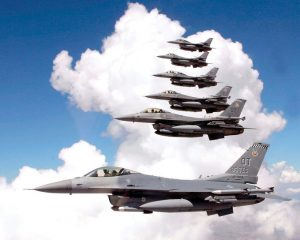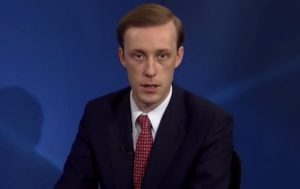After followers of cleric Muqtada al-Sadr stormed a government building in Baghdad’s seat of power that has been a lightning rod since the US occupied Iraq in 2003, the Green Zone was once again the focus of political violence.
The unrest in Baghdad began Monday after al-Sadr, a beloved figure among Iraq’s majority Shiite Muslims, announced his retirement from politics. In response to the rioting, authorities declared an open-ended curfew throughout Baghdad beginning at 3:30 pm, according to the Iraqi News Agency.
Also read: Iraq protests: 3 times Baghdad saw widespread violence
According to the Associated Press, the destabilising upheaval has killed 15, and it is the latest in the so-called Green Zone, a heavily defended region in central Baghdad that houses strong government institutions.
Iraq’s government has been paralysed since October 2021, when al-political Sadr’s party won the most seats in Iraq’s parliament but failed to secure a majority. The preacher and his supporters have been at war with other Shiite organisations that support Iran.
Al-Sadr announced the closure of his political institutions in a Twitter message. In the statement, the cleric, who ascended to power following the US invasion of Iraq, said he wished to bring political leaders “closer to their people and to feel their suffering, hoping that it would be a door to God’s satisfaction.”
Also read: Who is Muqtada al-Sadr?
Following the 2003 invasion that deposed Iraqi President Saddam Hussein, the United States and its allies established the International Zone of Baghdad, also known as the Green Zone.
The Green Zone was hit by mortars and rockets during the sectarian strife that followed the invasion.
Most Iraqis were barred from entering the strongly protected region, which housed the occupying authority and government contractors. The Green Zone was turned over to Iraqi authorities in 2009, but security concerns remained.
“Common sense says they’ll probably test the Green Zone,” US Army Colonel Steve Ferrari said at the time, adding that the zone was a “symbol of Iraq’s sovereignty.”
Even when security in the Green Zone was relaxed, skirmishes between demonstrators and police continued. Rockets hit the United States Embassy in 2020.
Also read: Iraq protests: How other countries have reacted so far
According to Reuters, al-Sadr supporters attacked buildings in the Green Zone last month in protest at the political impasse.
Al-declaration Sadr’s appeared to refer to the retirement of Shiite spiritual leader Ayatollah Kadhim al-Haeri, whose adherents overlapped with al- Sadr’s.
The announcement of al-resignation Haeri’s on Sunday urged his followers to seek advice from Iran’s Ayatollah Ali Khamenei rather than Shiite religious officials in Iraq’s holy city of Najaf, according to the Associated Press. The retirement of al-Haeri appeared to create a legitimacy dilemma for al-Sadr, who lacked the academic credentials to be an ayatollah, according to the news agency.
Also read: Iraq protests: 15 killed as Al-Sadr supporters storm government palace
In a tweet, Abbas Kadhim, senior fellow and Iraq Initiative director at the Atlantic Council, expressed concern that “they are on their own in facing the angry masses on the streets.”
“If the crisis is not defused by the system’s internal devices, expect a statement from the Shia highest authority in Najaf (G Ayatollah Sistani), who is the last resort for Iraq,” Kadhim said. “One limitation may be carefully considered: Sadrists must hear from Sadr to heed Sistani’s call.”
The Supreme Federal Court of Iraq will convene on Tuesday to consider whether to dissolve parliament, despite its competence to do so is unclear, according to Al Jazeera.






